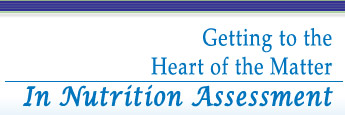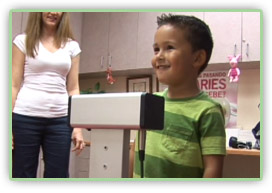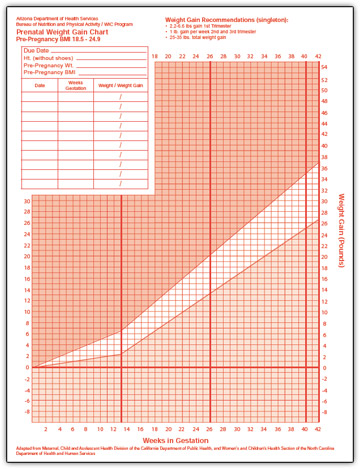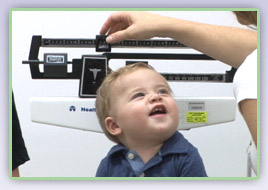
Module 2: Anthropometrics - Codes: 100's
Along the journey down the Yellow Brick Road you pick up the Scarecrow. The Scarecrow is a no brainer, checking height and weight is part of the WIC standards. You have discovered the Wizard and his gifts of Open-Ended questions. Glinda has reminded you of PCS. Now it is time to use the Scarecrow and the gift the Wizard gave him. What would you learn from Anthropometrics that would be a beneficial foundation for the rest of the appointment?
Have On HAND
Workbook Pages 20-24ABCDE Assessment Tool
Nutrition Risk Manual
Pregnancy Graph
Module Summary
Anthropometric measurements are the weight and height or length, which we measure in the labs of our clinics. Time in the lab taking these measurements provides an opportunity to use PCS skills in coping with real life client interactions.
Module Goals
- Identify how anthropometrics may represent inadequate nutritional needs
- Use open-ended questions to gather information and identify appropriate WIC odes (100ís)
- Make appropriate referrals when necessary
Module Highlights
What are anthropometric measurements?
These are the weight and height or length, which we measure in the labs of our clinics.Why do we check growth?
This is the first point of assessment; growth may help determine if nutritional intake is adequate, possible health concerns and development of growing bodies.For Example: For infant participants, anthropometric measurements provide a simple, yet highly effective method for assessing growth. Comparing their initial weights at birth with weight gained at subsequent appointments gives us convincing evidence that their little bodies are thriving.
When to Check Anthropometrics:
Measurements are taken at all certifications and health checks. At times the system may ask for an additional weight check. If participants exceed the 97th percentile for BMI or are below the 10th percentile for stature, AIM will ask for an additional recording of height and weight. Also, if a participant has arrived for a medium or high-risk appointment, appropriate anthropometrics should be performed.
How We Measure:
We measure the length of infants and young children, the height of older children and women, and weight. We also consider the ratio of weight-for-length and BMI as growth indicators. AIM plots their progress according to age-adjusted percentiles to identify potential health concerns.We use different ways of gathering this information in the lab.
- Under 2 years of age Weight/age, length/age and Weight/Length (Recumbent Measure)
- Over 2 years of age Weight/age, height/age, and BMI/age(Standing Measure)
What AIM Does Not Do
Yes, AIM does tell us what weight gain looks like, what the Body Mass Index is, what percentile a child is at. AIM ask a lot of questions, which gives some picture of what a participant may have experienced in their growth, weight change and Health History. Do you remember the PCS picture of the old lady and young princess? AIM does not tell you what a participant is really experiencing and their feelings. What does the doctor say about the growth or weight gain? How does she feel about the weight change she is experiencing? You asking the appropriate questions by putting a participantís needs first will allow you to see the picture that best fits.Now it is time for you to view a video and then practice with the activities. Please first watch the video near the top of the screen on the right, then you will be able work on the activities located in the purple box on the right side. When you have completed watching the video and your activities check-in with your Helping HAND before continuing.



